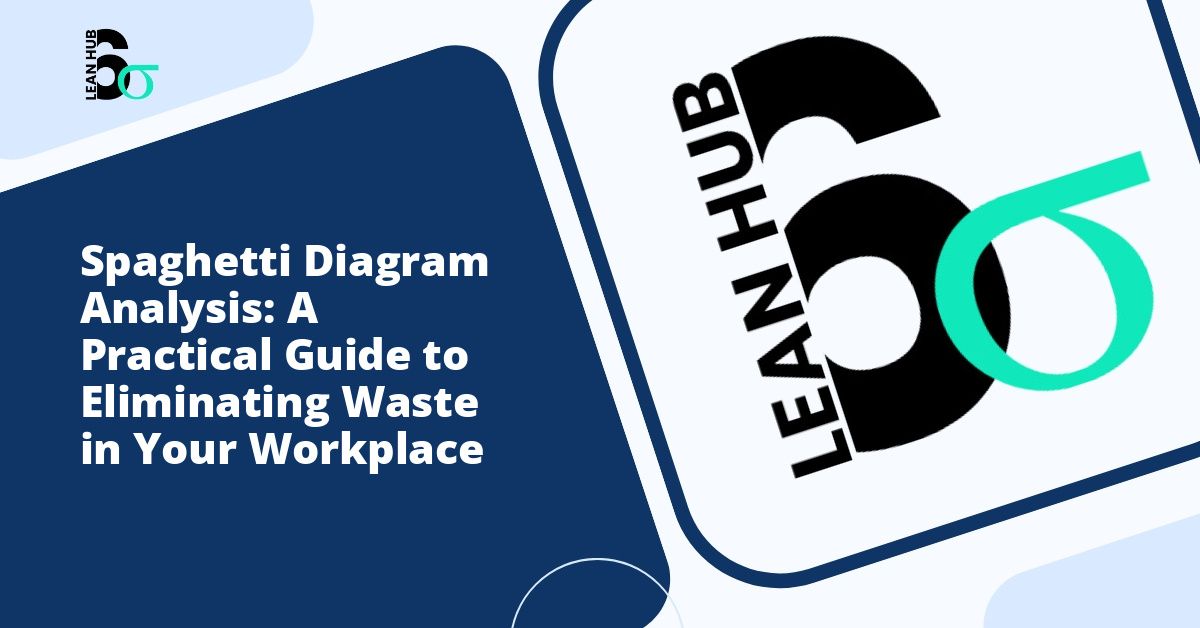In today’s competitive business environment, organizations constantly seek methods to improve efficiency and reduce operational waste. One powerful yet often overlooked tool in the lean six sigma methodology arsenal is the spaghetti diagram. This visual analysis technique helps identify unnecessary movement and transportation, two critical forms of waste that silently drain productivity and increase operational costs.
Understanding Spaghetti Diagrams in Process Improvement
A spaghetti diagram is a visual representation that maps the physical flow of materials, information, or people within a workspace. The name derives from the often tangled, overlapping lines that resemble a plate of spaghetti when drawn on a floor plan. These diagrams provide an immediate, intuitive understanding of movement patterns and help teams recognize inefficiencies that may have become invisible through familiarity. You might also enjoy reading about Queue Analysis: Why Work Piles Up and How to Identify the Causes.
The beauty of this tool lies in its simplicity. Unlike complex statistical analyses, anyone can create and interpret a spaghetti diagram with minimal training. This accessibility makes it an ideal starting point for organizations beginning their lean journey or teams in the recognize phase of their improvement projects. You might also enjoy reading about ANOVA Explained: Comparing Multiple Groups in Your Process Analysis.
The Two Types of Waste: Movement and Transportation
Before diving deeper into spaghetti diagram analysis, it is essential to understand the distinction between movement and transportation, both considered forms of waste in lean manufacturing and service operations. You might also enjoy reading about Multi-Vari Analysis: A Powerful Tool for Identifying Sources of Variation in Your Process.
Unnecessary Movement
Movement refers to the actions of people within their work environment. This includes walking to retrieve tools, reaching for materials, bending, stretching, or any physical motion that does not directly add value to the product or service. Examples include:
- Walking between workstations to access shared equipment
- Searching for misplaced tools or documents
- Excessive reaching or bending due to poor workspace layout
- Multiple trips to obtain information or approvals
- Traveling to distant printers, copiers, or supply rooms
Unnecessary Transportation
Transportation involves moving materials, products, or information from one location to another. While some transportation is necessary, excessive movement often indicates poor facility layout or process design. Common examples include:
- Moving work-in-progress items between departments multiple times
- Transporting materials to storage and then back to the production floor
- Shipping components to external locations for processing that could be done in-house
- Multiple handoffs of paperwork or digital files between departments
- Backtracking of materials through the production process
Creating an Effective Spaghetti Diagram
The process of creating a spaghetti diagram is straightforward but requires careful observation and documentation. Here is a step-by-step approach:
Step 1: Define Your Scope
Begin by clearly defining what you want to analyze. Are you tracking a specific product through manufacturing? Following a service request through multiple departments? Observing a single worker’s movements throughout their shift? The scope will determine the scale and complexity of your diagram.
Step 2: Obtain or Create a Floor Plan
Secure an accurate floor plan of the work area. This should include all relevant features such as workstations, equipment, storage areas, doorways, and obstacles. If a formal floor plan is unavailable, create a simple sketch that captures the essential elements to scale.
Step 3: Observe and Document
Conduct direct observation of the process or person you are studying. Use different colored lines or markers to represent different types of movement or different individuals. Record the actual path taken, including any backtracking or unnecessary detours. Take notes about the purpose of each movement and the time involved.
Step 4: Map the Movement
Draw lines on your floor plan representing the paths observed. Number or label each line segment to indicate sequence. The resulting diagram will show the frequency and distance of movements, making waste immediately apparent through dense, tangled line patterns.
Step 5: Measure and Quantify
Calculate total distances traveled and estimate the time spent in movement versus value-adding activities. These metrics provide concrete data to support improvement initiatives and help prioritize changes based on potential impact.
The Recognize Phase in Lean Six Sigma Projects
In lean six sigma methodology, the recognize phase is crucial for identifying opportunities for improvement. This phase involves acknowledging that a problem exists and understanding its scope and impact. Spaghetti diagrams serve as powerful tools during this recognize phase because they make waste visible and undeniable.
When teams see their processes mapped visually, the excessive movement and transportation become obvious. This recognition often generates immediate buy-in for improvement initiatives because the waste is no longer abstract but clearly illustrated. Stakeholders can see exactly where time and resources are being wasted, making the case for change much stronger.
During the recognize phase, spaghetti diagrams help teams ask critical questions: Why does this material travel so far? Why does this worker make multiple trips to the same location? Could we rearrange our workspace to reduce these distances? These questions form the foundation for systematic improvement efforts.
Analyzing Your Spaghetti Diagram for Improvement Opportunities
Once your diagram is complete, systematic analysis reveals specific opportunities for waste elimination. Look for these common patterns:
Backtracking and Crossover Points
Lines that cross over themselves or intersect frequently indicate inefficient flow. Backtracking suggests poor sequencing of operations or inadequate planning. These patterns often represent the most significant opportunities for improvement.
Long-Distance Travel
Excessively long lines between related workstations suggest opportunities for relocation or workspace redesign. Materials or workers that travel great distances regularly should trigger questions about whether these movements are truly necessary.
Repeated Trips
Multiple lines following the same path indicate repeated trips between locations. This pattern suggests opportunities for batching, relocating resources, or redesigning the process to eliminate the need for repeated movement.
Isolated or Remote Locations
Workstations or storage areas with many lines radiating outward may be poorly positioned. These locations should potentially be moved closer to where they are most needed or duplicated in multiple locations.
Implementing Solutions to Reduce Waste
After analyzing your spaghetti diagram and identifying opportunities, the next step involves implementing solutions. Common improvement strategies include:
- Workspace Reorganization: Rearrange equipment, tools, and materials to create more logical flow patterns and reduce travel distances.
- Point-of-Use Storage: Position materials and tools at the location where they are needed rather than in centralized storage areas.
- Process Redesign: Modify the sequence of operations to eliminate backtracking and create unidirectional flow.
- Cellular Manufacturing: Group related processes together so that products can be completed with minimal movement between areas.
- Technology Integration: Implement digital systems to reduce the transportation of paperwork and information.
Measuring Success and Continuous Improvement
After implementing changes, create a new spaghetti diagram of the improved process. Compare the before and after diagrams to visualize improvements and quantify reductions in travel distance and time. This comparison provides compelling evidence of success and helps sustain momentum for continuous improvement efforts.
Calculate metrics such as total distance traveled, number of trips made, and time spent in transportation versus value-adding activities. These quantifiable improvements demonstrate the return on investment for lean six sigma initiatives and build support for future projects.
Conclusion
Spaghetti diagram analysis represents a simple yet powerful tool for identifying and eliminating waste in any organization. By making invisible movement and transportation visible, these diagrams enable teams to recognize inefficiencies and design better processes. Whether you are beginning your lean six sigma journey or seeking specific tools for the recognize phase of a project, spaghetti diagrams offer immediate insights that can drive meaningful operational improvements. The key to success lies not just in creating the diagram but in taking action based on what it reveals, continuously striving to eliminate waste and enhance value delivery to customers.








